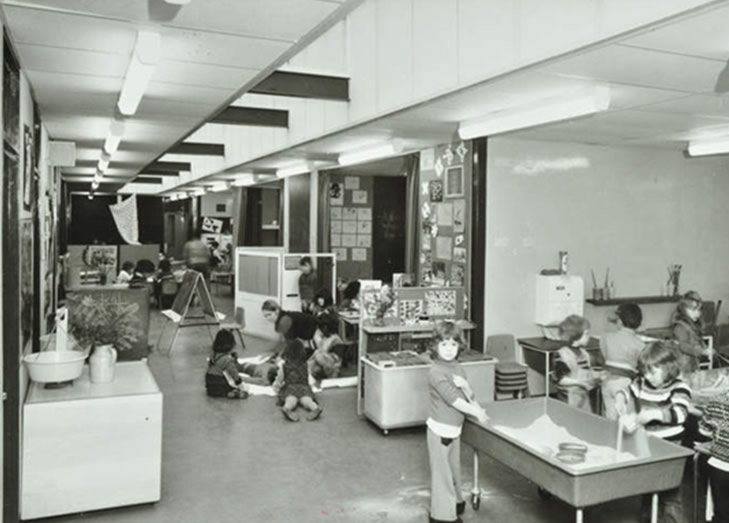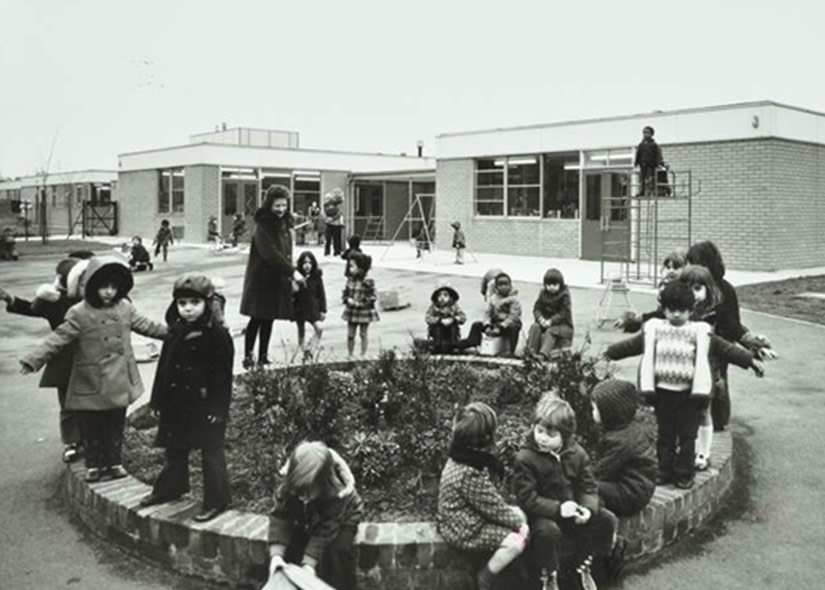History of Thomas Buxton Primary School
 Thomas Buxton Primary School can trace its origins to the commissioning, by the School Board for London, of the Deal Street Elementary School in 1896. This school was built for the London School Board to provide for the requirements of the 1870 Education Act that instigated the formation of local school boards and the provision of compulsory state education. The contractors were Messrs. A. Reed and Son of Stratford, whose tender for a school for 1,200 children was for £16,945. The architect was the prolific T. J. Bailey and the date of opening was 10 February 1896 despite the date on the school. An inscription on the gable end of the school reads LUX MIHI LAUS –Education bring me praise. The building (now called The Montefiore Centre) remains at the junction of Deal Street and Hanbury Street.
Thomas Buxton Primary School can trace its origins to the commissioning, by the School Board for London, of the Deal Street Elementary School in 1896. This school was built for the London School Board to provide for the requirements of the 1870 Education Act that instigated the formation of local school boards and the provision of compulsory state education. The contractors were Messrs. A. Reed and Son of Stratford, whose tender for a school for 1,200 children was for £16,945. The architect was the prolific T. J. Bailey and the date of opening was 10 February 1896 despite the date on the school. An inscription on the gable end of the school reads LUX MIHI LAUS –Education bring me praise. The building (now called The Montefiore Centre) remains at the junction of Deal Street and Hanbury Street.
 In 1915 the London County Council (LCC) decided it was appropriate to rename a school after Captain Robert Sebag-Montefiore. Montefiore had been vice - chair of the LCC’s Education Committee and had served with the Royal East Kent Yeomanry. That year, Montefiore became a casualty of the Great War and is buried in Alexandria, Egypt. Because of his family’s links with East End Jewry, his great aunt and uncle,- Sir Moses and Lady Judith Montefiore had links to Hanbury Street, Deal Street School was chosen as the school to be renamed in his memory. The picture shows a class from Robert Montefiore School in 1925.
In 1915 the London County Council (LCC) decided it was appropriate to rename a school after Captain Robert Sebag-Montefiore. Montefiore had been vice - chair of the LCC’s Education Committee and had served with the Royal East Kent Yeomanry. That year, Montefiore became a casualty of the Great War and is buried in Alexandria, Egypt. Because of his family’s links with East End Jewry, his great aunt and uncle,- Sir Moses and Lady Judith Montefiore had links to Hanbury Street, Deal Street School was chosen as the school to be renamed in his memory. The picture shows a class from Robert Montefiore School in 1925.
The vast majority of the children at the school were Jewish and the school remained largely Jewish for over half a century more. The Jewish Chronicle reported that in 1954, three quarters of the pupils at the school were from Jewish families.
The school operated exclusively as a primary school until 1961 when the LCC expanded the school to take secondary school aged children. It became all through school on two sites. The primary site remained at Deal Street but school buildings in Vallance Road were converted to become a secondary school department. The buildings in Vallance Road are today occupied by Osmani School. Children who failed the 11+ in the Deal Street school transferred to the secondary department in Vallance Road which was being run as a secondary modern, famously by Sir Rhodes Boyson between 1961-1966. Boyson left education for a career in politics rising to Parliamentary Under-Secretary in the Education and Science department during the 1980s.
In 1965, the LCC was abolished and charge of the Robert Montefiore Schools passed to the Greater London Council‘s Inner London Education Authority.
The ILEA, more powerful and progressive than its predecessor, led new pedagogical approaches that influenced the design of schools. Informal diffuse styles of teaching and child-centered pedagogy informed single storey open plan schools. Old board schools became deeply unfashionable and a Schools Replacement Programme was launched; Robert Montefiore Primary School being identified for rebuilding in 1968. The old school’s small rooftop playground was the main reason it was chosen for rebuilding. The old school building, now the Montefiore Centre, remains in Deal Street and the lack of outside space is plain to the casual passer-by.

1916 Ordinance Survey Map

Buxton Street in 1965. The derelict bomb site is where the modern day school would eventually be built.

What is now the Junior Corridor in 1973; then as an open plan classroom.
Land was found in Buxton Street for the new school building, where the present day buildings stand. Interestingly, a school had existed on the site in Buxton Street from c. 1914 until the buildings were destroyed when two high explosive enemy bombs destroyed the buildings on 6th October 1941. Work began on the new school in 1971. Although built as a primary school –the open plan end of the school (now the KS2 classrooms) would have been the infant classrooms. The large classrooms in EYFS and KS1 were originally designed for the older children.
The opening of the new Robert Montefiore Primary School Buxton Street was delayed because of a lack of daylight in some classrooms - the roof deck needing to be pierced to bring lux levels up to the statutory Band 2 daylight factor. The same thing happened at Holmleigh School in Hackney which was built by the same firm of architects. Eventually, in 1973 the children and staff of Robert Montefiore Primary School were finally given permission to move to their new premises in Buxton Street. The new school building was officially opened on 6th March by Miss Culpeck – Senior Matron of The Royal London Hospital.

1973: Children playing in what is now the EYFS playground
In 1979 both Robert Montefiore schools were shut due to falling pupil numbers. The secondary school in Vallance Road was mothballed until being reopened as Osmani School in 1986. The primary school in Buxton Street reopened as two separate schools; Thomas Buxton Infant School and Thomas Buxton Junior School. Thomas Buxton was, presumably, chosen as the namesake for the new school because of the school’s location on Buxton Street. Statesman, brewer, abolitionist, social reformer, Member of Parliament, co-founder of the RSPCA– Thomas Buxton lived amid the Brick Lane Black Eagle Brewery which his family owned.
The Thomas Buxton Schools remained two separate schools on the same site until amalgamation in April 2011.
School Garden
In early 1988 work began to redevelop the school garden area with roses and some bedding plants. The scheme required lots of sand, soild and sweat!
Reunion 2012
Take a look at some of the photos from a reunion that was held in 2012 for past Thomas Buxton pupils.


